Dynamic Content Marketing: It’s The Personal Touch That Counts
Daniel Trick
Oct 14, 2024
9 min read
Keyword rankings and traffic are important, sure.
But your clients want to see a measurable impact on their business.
They want conversions.
And that’s where dynamic content can help.
SEO attracts visitors. Dynamic content turns those visits into meaningful actions.
In this guide, we’ll explore what dynamic content is and how you can use it to boost engagement and drive conversions for your clients.
You’ll learn how to add a bit of dynamism to your content marketing strategy with dynamic content.
We’ll cover:
- What dynamic content is
- Dynamic content vs. static content
- Benefits of dynamic content
- Dynamic content examples
- Dynamic content best practices
What Is Dynamic Content?
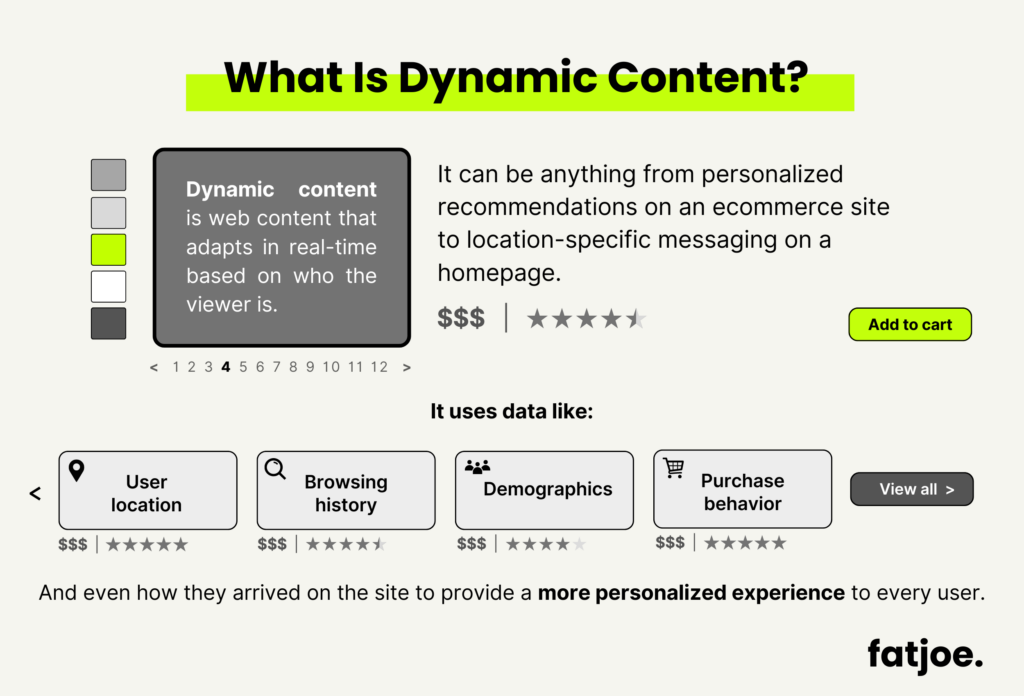
Dynamic content is web content that adapts in real time based on who’s viewing it. This could be anything from personalized recommendations on an e-commerce site to location-specific messaging on a homepage.
Unlike static content, which stays the same for everyone, dynamic content adapts to each user. It uses data like user location, browsing history, demographics, purchase behavior, and even how they arrived on the site to provide a more personalized experience.
Think of dynamic content like a chameleon.
It adapts to your audience’s preferences. Show tailored recommendations and personalized messages based on what they’ve browsed.
It’s like having a one-on-one convo with each customer.
— JAKOB RODE (@JakobRode) September 29, 2024
The goal is to create a tailored experience for each user. You want users to feel like the website is speaking directly to them.
Dynamic Content vs. Static Content
Static content stays the same for every visitor. Whether it’s a homepage, blog post, or product page, the information doesn’t change, no matter who’s viewing it.
This one-size-fits-all approach is easier to create and manage. It also works well for “About Us” pages and other evergreen content.
But it doesn’t deliver the personalization that internet users have come to expect.
Dynamic content changes based on the user’s behavior, demographics, or preferences. It adapts in real-time, creating a personalized experience for each visitor.
This could mean personalized product recommendations or tailored CTAs based on user signals like browsing history or location.
Benefits of Dynamic Content
Here’s why dynamic content is something you should be looking to create for your clients:
Higher Engagement
Getting traffic to your site is just the first step. The challenge is keeping users interested long enough to convert.
This is where dynamic content makes a difference.
When visitors see content that aligns with their past behavior or preferences, they’re more likely to engage.
Why?
Because the content feels relevant.
It’s not just another generic web page – it’s a personalized experience that speaks directly to them.
Higher engagement can also boost SEO performance. Leaked Google documents suggest user engagement metrics do influence rankings, despite past claims to the contrary.
Metrics like time on page, bounce rate, and pages per session improve with dynamic content. The longer users stay and interact, the stronger your SEO performance.
Boost Conversion Rates
Dynamic content can boost conversion rates by delivering personalized marketing messages that push visitors to take action. That could be capturing leads, selling products, or getting users to sign up for a service.
In a recent study, HubSpot found that dynamic, personalized CTAs convert 202% better than standard ones:
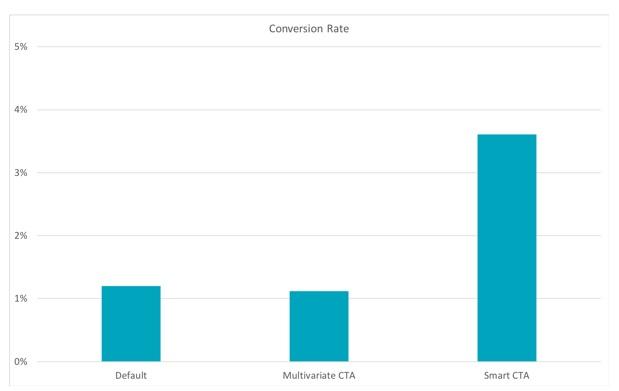
You can use dynamic content to target visitors based on where they are in the buyer’s journey.
For example, a first-time visitor might see a CTA offering 10% off their first order. And a returning visitor could be shown a special offer based on their previous purchases.
This level of personalization makes users more likely to engage and convert.
Improved Customer Retention
Attracting new customers is important. But keeping them coming back is key to long-term growth. Repeat customers spend 67% more than new customers.
Dynamic content can help you improve retention by making every visit feel more personal and unique.
A simple way to do this is to greet returning visitors by name. This can instantly create a more personalized customer experience. It can help to build a stronger connection with the brand and increase customer loyalty.
Dynamic Content Examples
The best way to understand the potential of dynamic content is to see it in action. Here are five real-world examples of dynamic content:
Personalized Product Recommendations
Personalized product recommendations are a proven e-commerce tactic for boosting conversions. It’s one of the most effective ways to use dynamic content.
Amazon is a great example. It’s estimated that 35% of Amazon’s sales come from their personalized product recommendation algorithm.
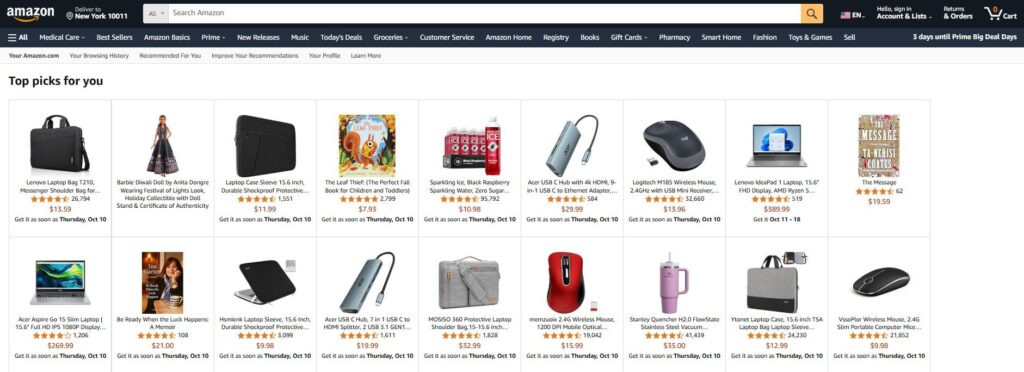
When users browse, search, or make a purchase, the platform collects data on their preferences and past behavior. Using this data, Amazon suggests products that are relevant to the user.
For example, if a visitor searches for “running shoes,” the next time they visit the site, they’ll see a curated selection of running shoes from brands they’ve previously viewed.
This personalization directly caters to the user’s interests. And it can make a significant impact on conversions. In a recent study, Barilliance estimated that personalized product recommendations account for 31% of total e-commerce revenues.
Dynamic Landing Pages
Dynamic landing pages are a powerful way to personalize content based on how visitors get to your site. You change elements like CTAs, dynamic titles, and images depending on who’s visiting and where they came from.
For example, let’s say you want to order food online. You type “food delivery” into Google and see a Deliveroo ad offering £12 off your first order.
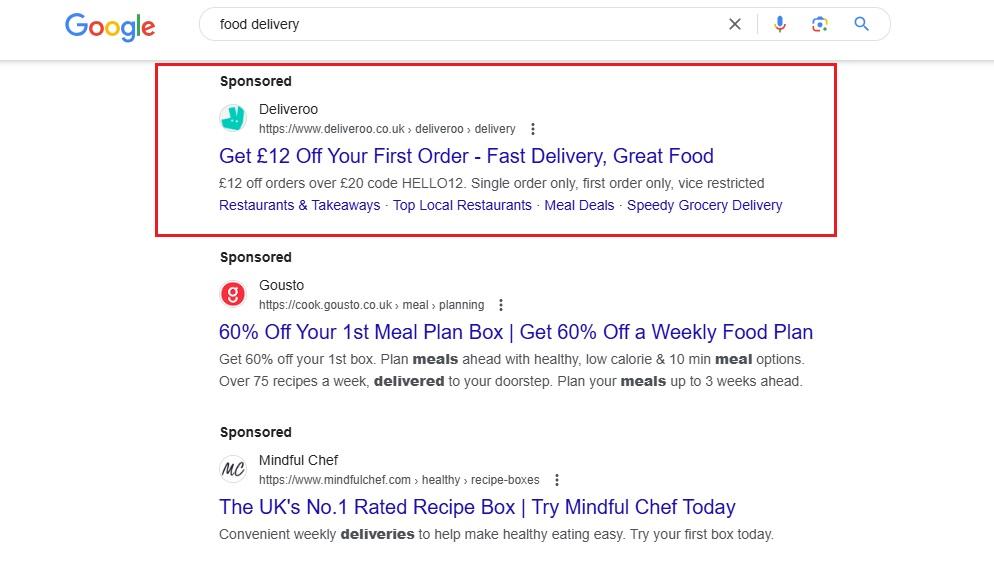
When you click the ad, the landing page shows you that exact discount. It’s personalized for new visitors, making the offer feel super relevant.
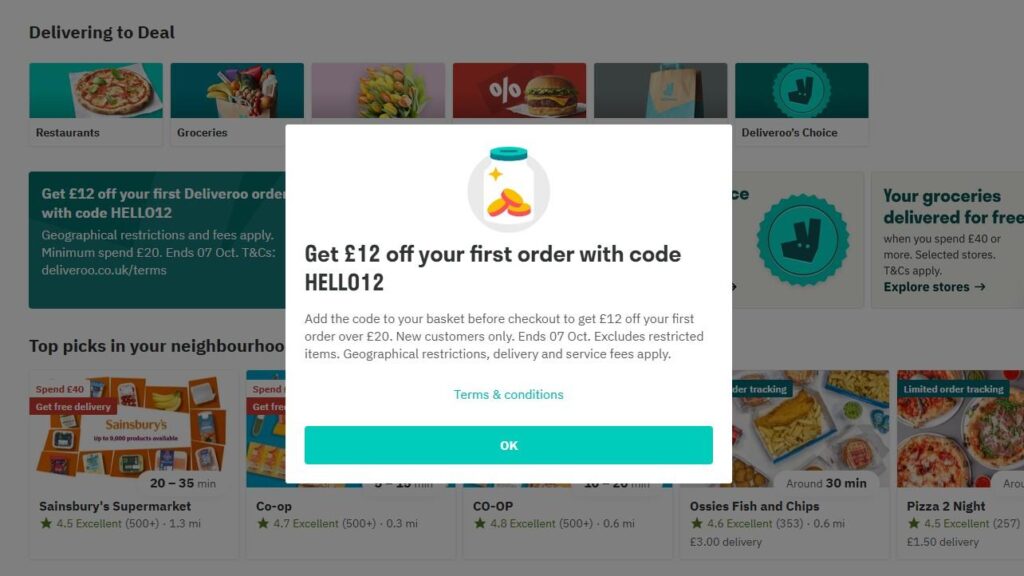
You can also use dynamic elements to create urgency.
Labels like “In High Demand” or “Best Seller” on product pages let customers know what others are buying.
Booking.com even shows how many rooms are left when users scroll through hotel search results.
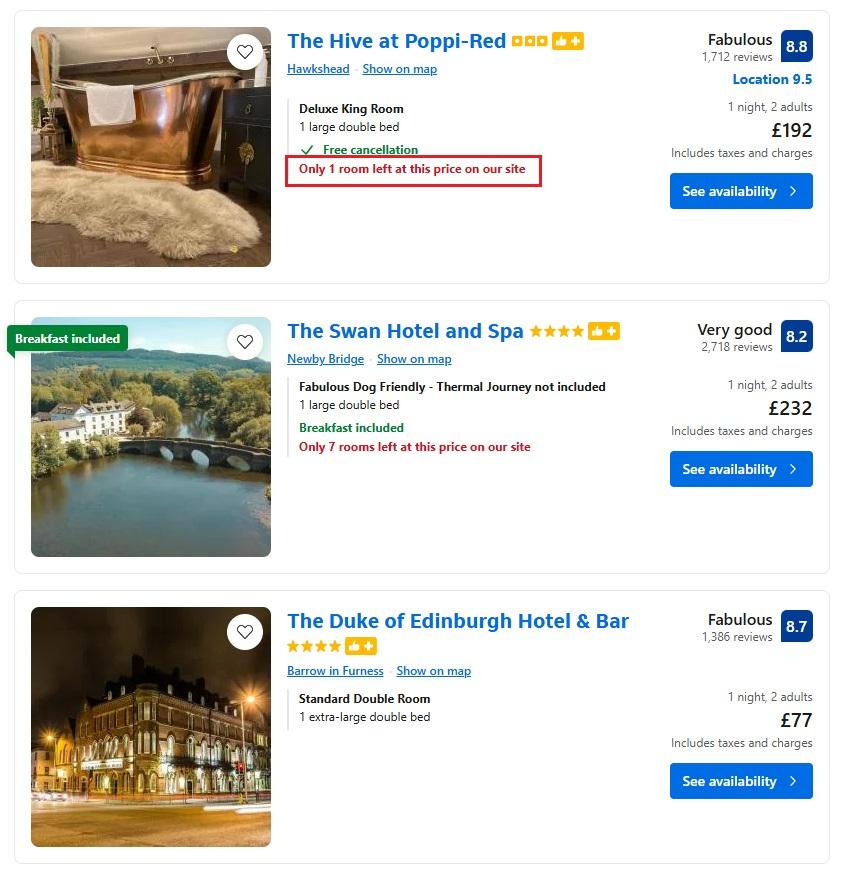
Dynamic landing pages boost conversion rates by delivering a highly relevant experience. The more personalized the page, the more likely visitors are to fill out a form, request a quote, or make a purchase.
Location-Based Personalization
Location-based personalization allows you to adjust content based on where a visitor is located. Dynamic content tools can use data collected from IP addresses or geolocation to detect a user’s location and change key website elements to match.
This is often used for international SEO projects.
For example, if you visit Butterfly Twists from the UK, you’ll see prices in pounds and UK sizing.
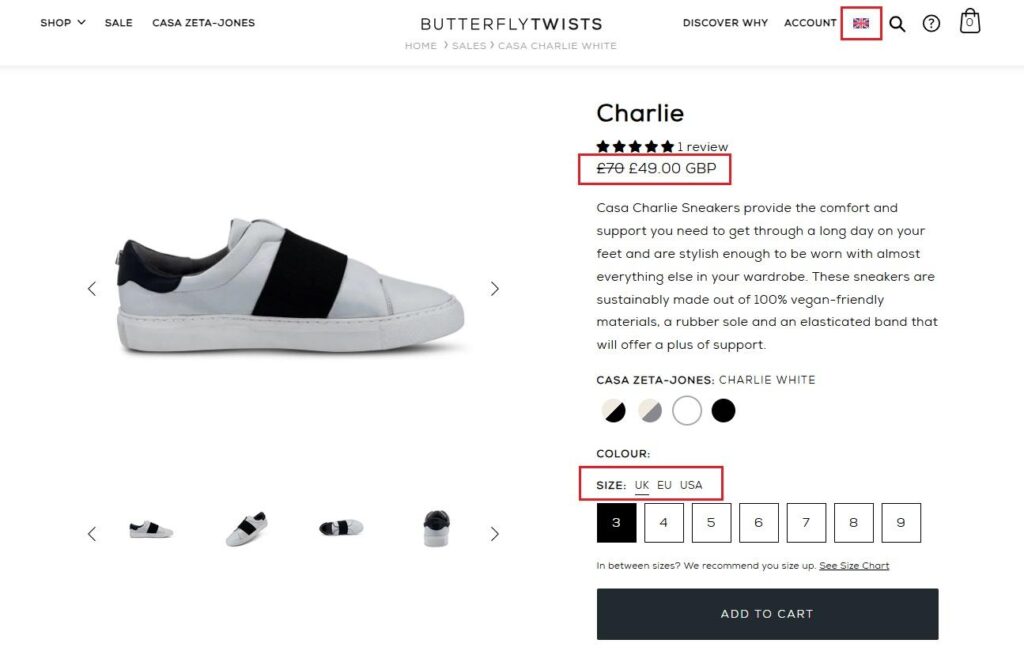
But if you use a VPN to change your location to the US, the page automatically adjusts. It shows prices in dollars and US sizing.
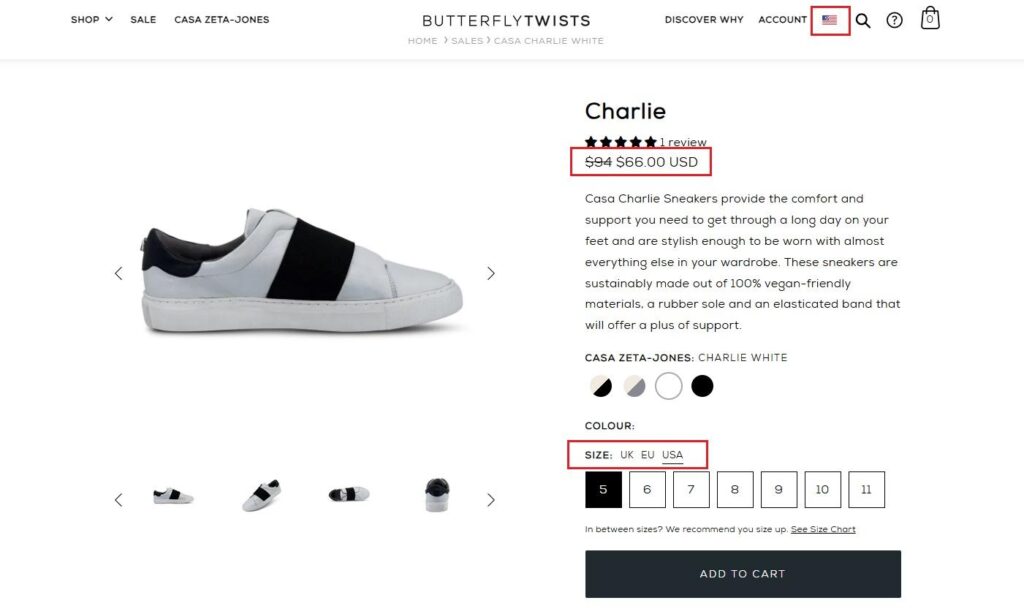
This personalization makes the content feel more relevant. That can have a big impact on engagement and conversions. People are much more likely to take action when the content fits their specific context and needs.
And people are willing to share their data to access those experiences. According to a Salesforce study, 61% of Millennials and 52% of Gen X are willing to share data for a more personalized shopping experience.
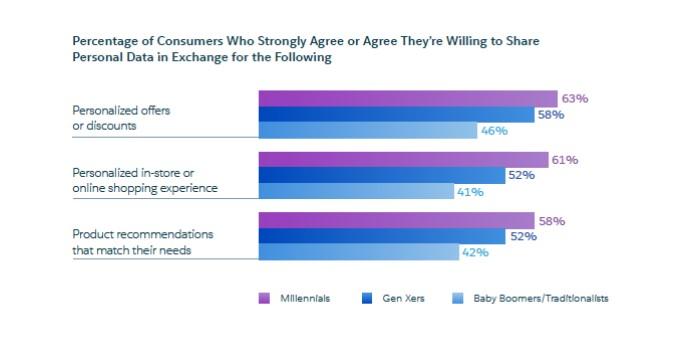
Location is a key piece of that data.
Dynamic Email Content
Email marketing is a super-effective way to re-engage users. And when you combine it with dynamic content, it can be a key driver of conversions.
Here’s an example from Northern Trail. The dynamic content in the email changes based on the recipient’s gender:
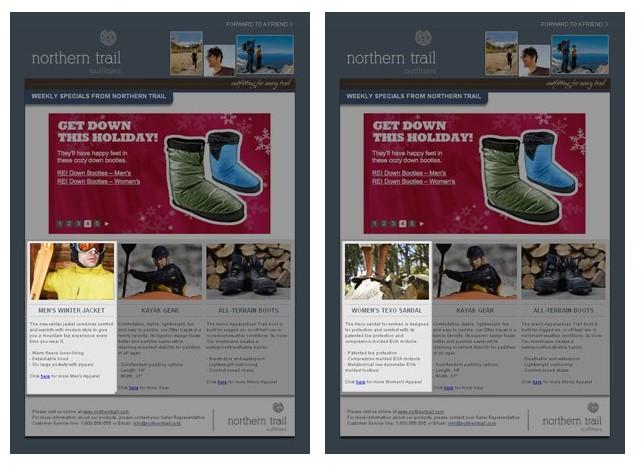
This makes every email feel like it’s custom-made for the reader.
You could also use dynamic content in cart abandonment emails. For example, you can pull in dynamic product images of what the user left in their cart.
This approach gets results.
Behavior-triggered emails with dynamic content see a 70.5% higher open rate and a 152% higher click-through rate than standard emails.
Dynamic email content can help you reach people at the right moment in the buyer’s journey. You can deliver relevant content when the user is most likely to convert.
Dynamic Blog Content
You can also use dynamic content to personalize your blog content.
While most blog content stays static, you can use dynamic elements like CTAs, banners, and text blocks to tailor the page based on the user’s behavior, preferences, and position in the sales funnel.
For example, Pipedrive adds a customized CTA banner for new visitors reading their blog content. This kind of dynamic element makes the experience more relevant and targeted.
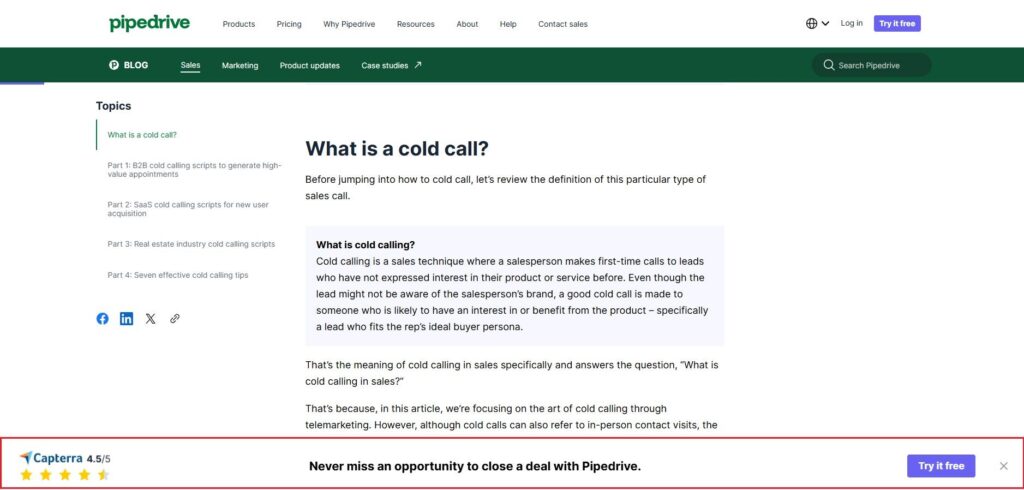
You can take it further by showing returning readers personalized content that references articles they’ve already viewed or topics they’ve shown interest in.
First-time visitors might see beginner-level content to help them get started. But you can offer deeper, more relevant recommendations for returning readers.
This approach encourages users to stay on your site longer and take meaningful action. It can also improve key SEO metrics like time on page, bounce rate, and session duration – factors influencing Google’s ranking algorithm.
Dynamic Content Best Practices
Ready to help your clients implement dynamic content? Here are some best practices to keep in mind:
Keep Your Data Clean
Dynamic content personalization is only as good as the data behind it. If your data is inaccurate or outdated, the personalization falls flat.
This leads to irrelevant content that frustrates users and damages your client’s credibility.
In a recent survey, 43% of marketers said getting accurate data for personalization is one of their biggest challenges today.
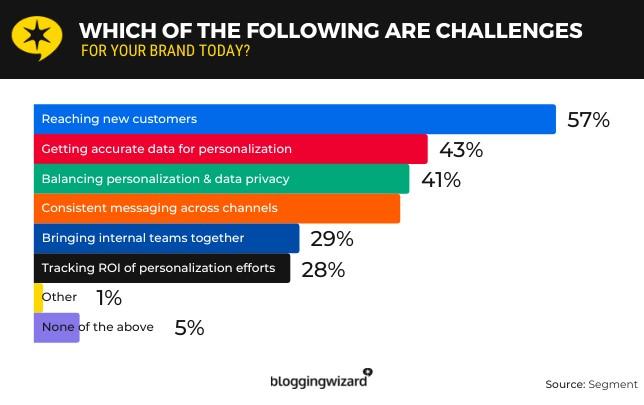
You need clean, well-organized data on user behavior, preferences, demographics, and interactions. Tools like Google Analytics and Salesforce can help you gather and manage this data.
Focus on tracking meaningful user data points like browsing history, past purchases, location, referral sources, and engagement patterns.
Segment Your Audience
Not every visitor to your client’s site has the same needs or intent. That’s why you need to segment your audience.
This allows you to tailor your content based on user demographics, behaviors, and actions. It helps you create content that feels personalized and relevant to each user group.
You can use tools like HubSpot to create audience segments. These tools allow you to categorize users based on the following:
- Demographics (age, gender, location)
- Behavior (browsing history, purchase activity)
- Referral source (social media, paid ads, organic search)
- Customer journey stage (first-time visitor vs. returning customer)
Keep Testing and Improving
Dynamic content isn’t a “set-it-and-forget-it” strategy. It requires constant testing and optimization.
You need to A/B test different elements of your dynamic content strategy to get the best results. This helps you figure out what resonates most with your audience.
The goal is to make sure your personalized content is driving real results – more conversions and higher engagement.
You can use tools like Optimizely or VWO for dynamic content optimization A/B testing. Use data to fine-tune your strategy and continuously improve the user experience.
Avoid Over-Personalization
Too much personalization can backfire and feel invasive.
The key is to strike the right balance. You want to deliver relevant content without crossing the line into being “creepy.”
Stick to helpful, friendly personalization. Greet users by name and offer smart product recommendations. But don’t go overboard with hyper-specific details.
Don’t create ads or dynamic pop-ups saying, “We saw you spent 20 minutes looking at blue socks at 2:47 p.m. last Tuesday.” Instead, go with something more subtle, like, “Looking for socks? Here are some great picks we thought you’d love.”
Keep it personal, but don’t make it weird.
Provide a Clear Value Exchange
People are more willing to share their data when they understand what they’re getting out of it. Make sure your privacy policy highlights the benefits of dynamic content for the user.
Transparency is key.
Users need to know why you’re collecting their data and how it benefits them. Saying, “We’ll track your every move for our digital marketing department,” isn’t going to work.
Something like “We’ll recommend products you’re more likely to love based on your preferences” is much better.
You need to highlight the value you offer to get people to trust you with their data.
Add Fallbacks For Broken Dynamic Content
Sometimes your dynamic content won’t work. I don’t mean it’ll fall flat with your audience; I mean it actually won’t work.
In cases like this, the last thing you want is for your emails to go out with “Hi [first name]” there. It looks unprofessional, sloppy, and maybe even like a scam.
To fight this, set up fallback values that your content can use if it can’t find relevant info to merge in.
Any tool that lets you set dynamic content will let you set a fallback to add in, just in case. That could just be a generic “Hi there” for mail tags or a default product picture for dynamic imagery.
Drive More Conversions with Dynamic Content
If you’re looking to prove your worth to your SEO clients, you should be thinking about dynamic content.
You can deliver a more personalized experience to each user, which encourages them to stay on your site longer AND to take more actions while on there.
The result?
More value for your clients and real, measurable results that go beyond rankings and traffic.
Become a Pro at SEO
Join 65,000 others and learn the secrets to SEO success with our weekly blog posts.
